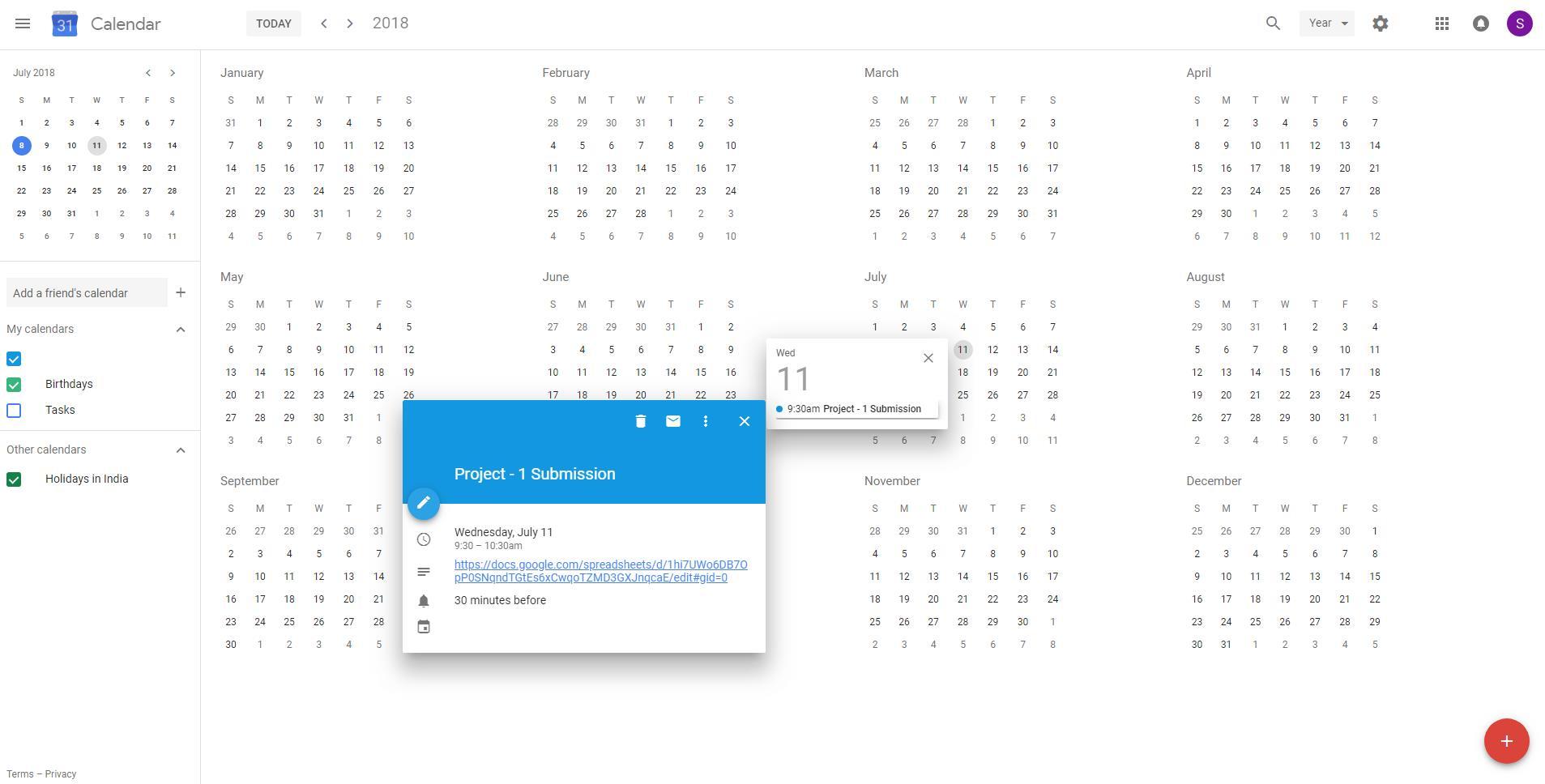An academic year is an eventful year which includes – lesson delivery, assessments, activities, functions and celebrations. The center of all these events is a ‘TEACHER’.
Conducting all these events in roughly 9 to 10 months is an enormous task. Without proper schedule of events the academic year runs towards a downfall.
Calendars designed across platforms give teachers a good scope of carrying forward designed events without much hiccups. Consider, Google Calendar, for instance, the major aspects it takes care for any individual using it are:
- Insert events, reminders and tasks
- Schedule appointments
- Share events reminders and tasks
- Allow collaboration or review
- Connect to your work email for easy recollection
- Create separate calendars – public or private
Working with Google calendars
Lesson planning Design through calendars
![]()
Teachers prefer to set their lessons in complete order so that it can give them a total picture of what is to be done in the class. The calendar model that is suggested here has a clear heading along with the date and time reference for the teacher concerned. The schedule can be repeated or set for appropriate dates of the week.
The lesson can be set with locations, adding conferences or additional members who can give an extra input into the topic or correlate with real life applications for the topic designed. Guests can be added through their email ids who can observe these lessons, thus providing access towards teacher performance indicators and also feedback on trainee teachers. Shared calendars provide individual access to comment or review such lessons thus maintaining privacy.
![]()
The descriptive part will carry the actual plan of the lesson on how the delivery happens along with time schedule, classroom process throughout the delivery and assessment of the learnt is carried out in the class. The entire procedure of the lesson can now be shared to parallel teachers through ‘invitation’ icon in the calendar.
The calendar can thus be set for the entire year, with events, lessons and assessments. Reminders for assignments, homework’s or projects have always been tedious for teachers. The task becomes much easier when noted in calendars and set as reminders to all those involved in the task.
![]()
Classroom dynamics involves both the fast learner and the slow movers. Remembering and catching up with individuals is hectic for a single teacher. Calendar provides scope for the teacher to authenticate and assess individual students through link to ‘docs’ or ‘spreadsheets’ which carry class and work references. Furthermore, incomplete work can be set as notifications for further reminders to both individual students as well as other teachers who have taken up the work in absentia of the work setter.
With lot of applications available and lot of providers for such applications, it is widely confusing in its functioning. However, the most convenient method of use of technology is to work with a known platform rather than set ourselves as learners, for a complicated-unknown solution.
Phenomenally, classrooms take up most of the decisive time for a teacher, most often, plan B is what works out. Schedules are only an outline for a teacher performance, the actual process needs to be set with multiple options. Today’s online calendar provides such options for a very dry to volcanic classrooms. Moods and situations keep changing, yesterday’s concept may become today’s doubt; to allow deep learning – probing becomes essential. Setting such questions and its availability through mobiles provide scope for their easy access in classrooms. Going back and reflecting also becomes easy with such calendars.
It is not the time we invest in technology that is useful, it is how effectively and efficiently we utilise them that makes us go ahead and this is one of the free solutions for such utilisation that can build a 21st century teacher.
